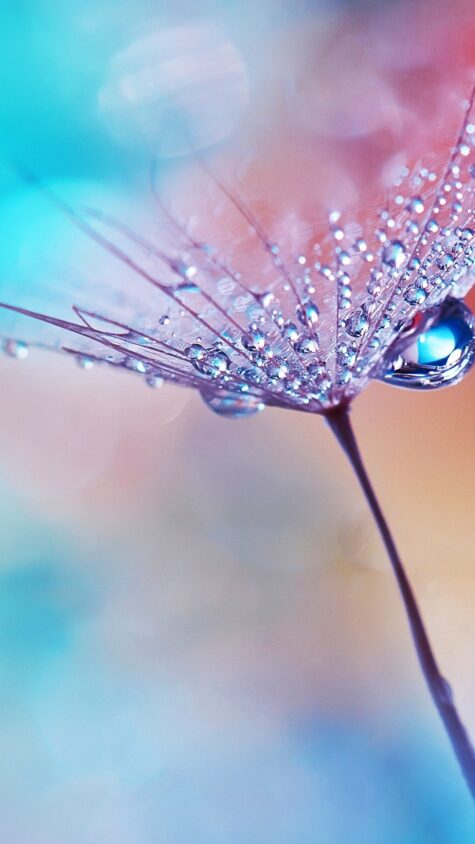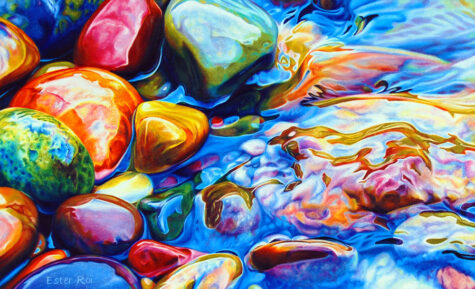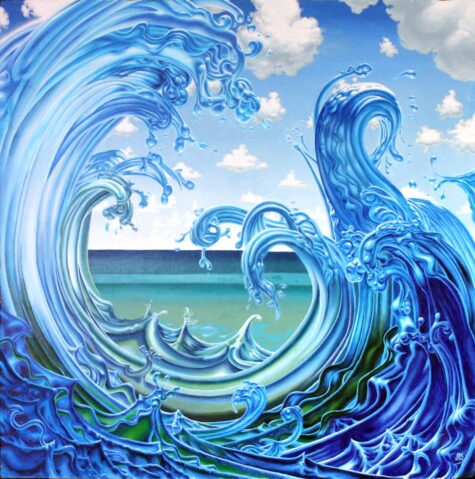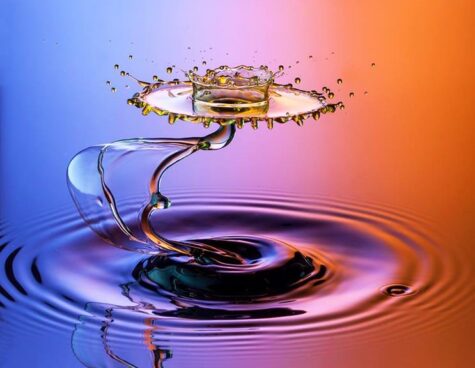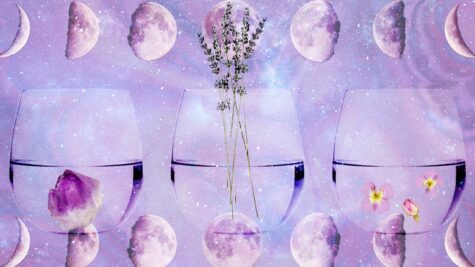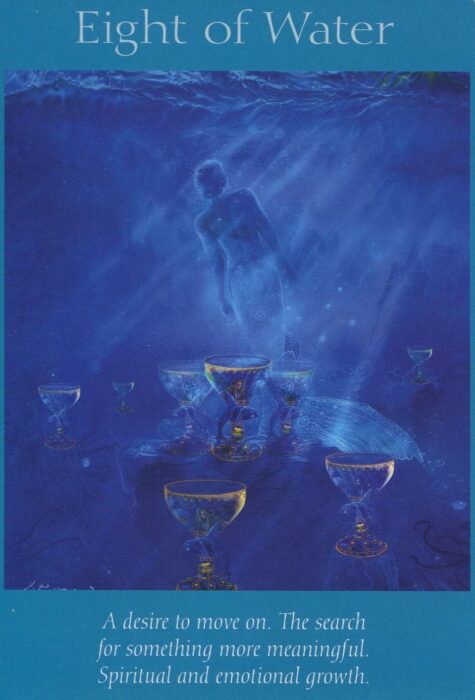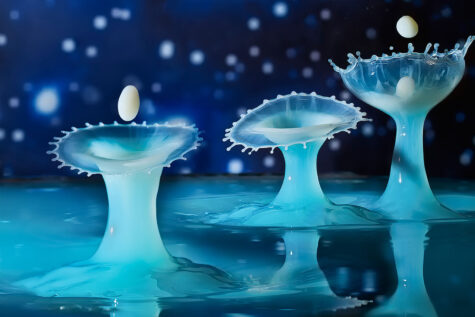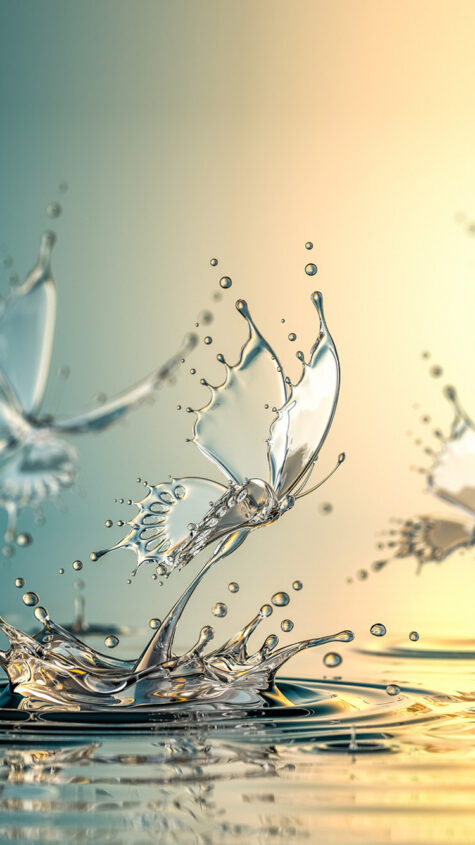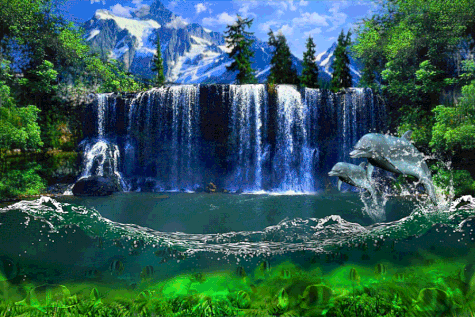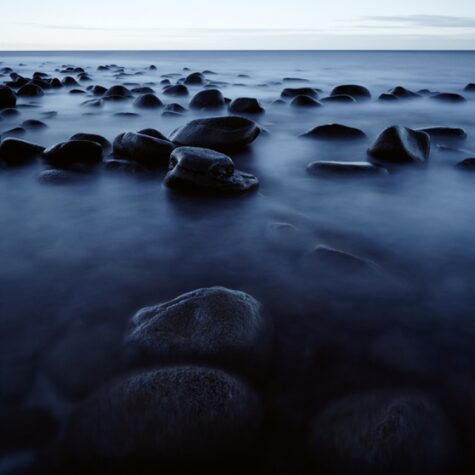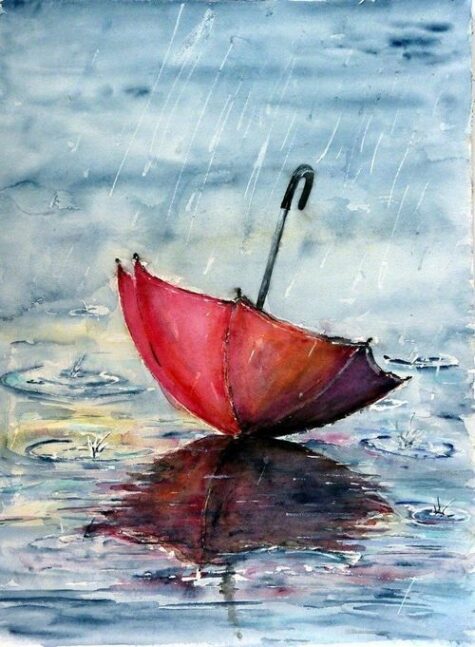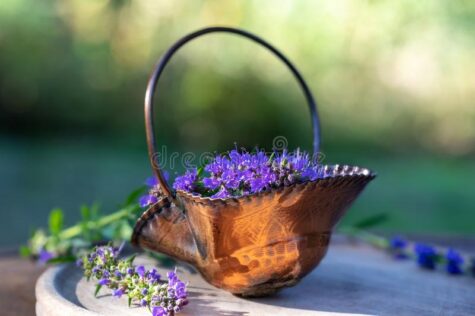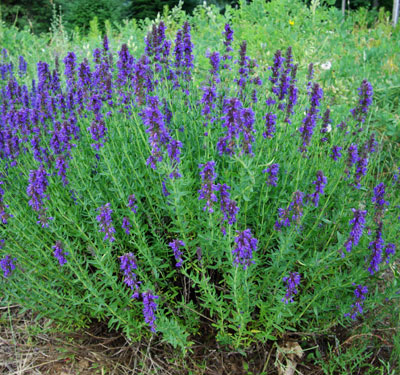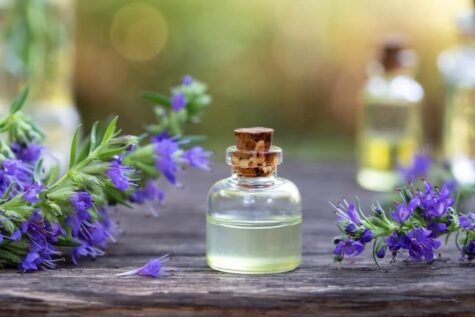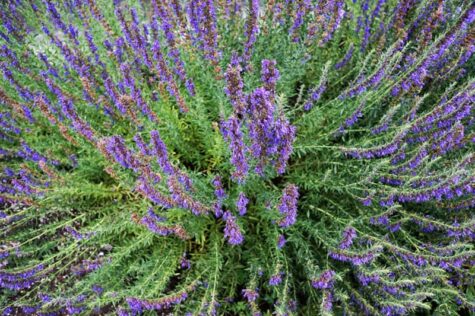Monthly Archives: May 2021
“There is no life without water.”
~Albert Szent-Gyorgyi
Water magick is very versatile; it incorporates techniques that bring about changes both within and without. For water magick to occur within, one must consume the water or call upon that aspect of the self. For it to occur without, one must bathe in it, swim in it, cleanse with it, etc.
Water is a universal symbol of the unconscious mind and is linked to the moon, femininity, and irrationality. Oceans are equated with chaos as they are boundless and ungovernable. The conscious mind is more closely linked to the lake or pond. The ancient belief that the earth was created from primordial waters is a psychological metaphor for the birth of ideas in the unconscious mind.
Water is the primordial substance of Goddess Mother; one of the four elements; in Sanskrit “Va” is one of the primary mantras the brought the universe into being; the glyph for water is a circle with a horizontal line, like the sea horizon, called a diameter, which literally means “Goddess Mother”; the primordial Ocean of Blood, the Generative Womb of All, the Deep.
Water Associations and Symbols
Water is sometimes represented by undulating lines, or a triangle pointing down. Colors commonly associated with water are blue and green.
- Life
- Motion
- Renewal
- Blessing
- Intuition
- Reflection
- Subconscious
- Fertilization
- Purification
- Transformation
Differing Types of Water
The magickal properties of particular types of water can be used for the following purposes:
- Creeks and streams: Purification, harmony, cleansing
- Dew: General health, eyesight, beauty. Dew is said to be especially powerful if gathered at dawn on Beltane.
- Fog and mists: Creativity, balance, partnerships.
- Ice: Transformations, balance, creativity.
- Pond or lake water: Peace, contentment, relaxation, self-reflection.
- Rain water: Energy, protection, cleansing. The first rain that falls in the month of May is considered sacred.
- River water: Cleansing, moving forward, protection.
- Seawater: Health, magickal power, manifestation of goals. An old Welsh belief states that a spoonful of seawater a day will ensure a long and healthy life.
- Snow: Transformations, balance.
- Spring water: Growth, holy water, cleansing, protection, prosperity.
- Swamp and waste water: Banishing, binding.
- Waterfalls: Power, energy, success.
- Well water: Healing, wishes, intuition.
The Environment of Water
The areas surrounding the water can be used for the following magickal purposes:
- Beaches: Rituals, spells, fascinations, meditation.
- Harbors: To promote abundance and prosperity; to serve as an aid in banishing things.
- Riverbanks: To increase personal power.
One method of water magick is to draw symbols on a sandy beach and wait for the waves to erase them and bring your spell to completion. You can use magickal symbols or simple stick figures. You can also draw with soapstone or natural chalk and allow the rain to wash it away. Releasing things into a running stream is yet another method.
The element of water is associated with the western quadrant and represents dreams and feelings. More ways to work with this element are magickal baths for cleansing, love, healing, protection, and prosperity.
Water drowns and erodes, wearing away even the densest of stones given enough time. Water is also one of the four elements essential to life in traditional western philosophy. Its qualities are fluidity and cohesiveness. Flowing water usually represents change and the passage of time.
Water Correspondences
Cup: medieval universal symbol of water, the mother element; represents the water of the sea womb which gave birth to the earth and all that lived on it.
Fountain: the fons vitae, or fount of life, was the source of the life force, the primordial “nether upsurge” of blood/water from the womb of Mother Earth.
Lapis Lazuli: traditionally symbolized water as the primordial element of creation.
Lotus: Hindu womb of nature; symbol of the four elements, water being the surrounding support for the stalk of the lotus blossom.
Ocean: equated with the Tao as the primordial and the inexhaustible.
Pearl: created from the union of male (fire) and female (water); the merging of water and moonlight.
River: symbol of purification, death and rebirth; dwelling place of gods, goddesses, water-spirits, nymphs, and naiads (in Greek mythology a type of female spirit).
Sea: the eternal deep; Egyptian name for the sea is Temu; symbol of birth and rebirth; holy baptismal waters; in Scandinavia called “the Mother’s Womb”; associated with ancient goddesses the world over; global universality of the sea goddess.
Streams: sacred, life-giving water; curative; restorative.
Well: the feminine principle; womb of the Great Mother; sacred portal to the “other world.”
Crossing Water
If you are ever out walking or driving and feel danger or ‘evil’ nearby, try to cross over water. This can mean driving over a bridge or stepping over the water running down a gutter or stream. Evil and danger cannot cross over water, for it purifies and neutralizes it, thus rendering you safe.
This is an ancient custom, but can still be used today with good effect.
Water Symbolism
The symbolism of water has a universal undertone of purity and fertility. Symbolically, it is often viewed as the source of life itself as we see evidence in countless creation myths in which life emerges from primordial waters.
Interestingly, we are all made of water, and so we can liken many of these myths and allegories to our own existence (the macrocosm mirroring the microcosm and vice versa). Further, we can incorporate symbolism of circulation, life, cohesion and birth by associating the creative waters of the earth with the fluids found in our own body (i.e., blood).
In Taoist tradition, water is considered an aspect of wisdom. The concept here is that water takes on the form in which it is held and moves in the path of least resistance. Here the symbolic meaning of water speaks of a higher wisdom we may all aspire to mimic.
The ever-observant ancient Greeks understood the power of transition water holds. From liquid, to solid, to vapor – water is the epitome of metamorphosis and philosophical recycling.
Among the first peoples of North America, water was considered a valuable commodity (particularly in the more arid plains and western regions) and the Native Americans considered water to be a symbol of life (further solidifying the symbol affixed in many creation myths).
So it is also with the ancient Egyptians as we learn their beloved (and heavily relied upon) Nile river is akin to the birth canal of their existence.
- Unseen influences.
For many reasons, water meaning deals with intuition, psychic perception and dreams. What happens under the surface of water is a mystery to the unaided eye. It’s much the same with human emotions. Water reminds us to dive beneath the surface of our feelings and use intuition for better understanding.
- Healing effects.
For centuries, cultures around the world have viewed water as a sacred symbol of healing, cleansing and renewal. It’s a no-brainer, really. Water washes off the grime…not just mud, but also the crummy stuff that clutters in our hearts. Water can energetically cleanse us inside and out!
- Get flexible.
One of the most beautiful lessons water can teach us his how to be flexible and embrace change. Consider: Water always takes on the form in which it is held. It can also carve out mountains to make its way forward. Water reminds us to go with the flow no matter what the situation.
Water In Astrology
In western astrology, the following signs are Cancer, Scorpio, and Pisces are considered to be “water” signs.
- Cancer – The Crab
Cancer is a cardinal water sign and it represents clarity, purity, trust, refreshment, and regeneration. The crab’s shedding of its shell for a new one represents the rebirth or renewal aspect of water. Its contentment to flow with the natural cadence of water represents motion and trust.
- Scorpio – The Scorpion
Scorpio is a fixed water sign. Water deals with the subconscious and holds endless mysteries like the obscure world thriving inside vast murky oceans. The sign Scorpio associates with water to symbolize stillness, reflection, and mystery.
- Pisces – The Fish
Pisces is a mutable water sign and representative of life, motion, depth, and understanding. Water is believed to contain knowledge of the infinite unknown and is known to be the source of life. As a water symbol, the fish represents wisdom, creativity, and fertility.
Water In The Tarot
In the Tarot we find water is symbolized by the entire suit of cups. As water symbols, Tarot cups represent intuition, emotion and inter-connected energy flow between all living things. Just like water is formless and takes the form of the vessel it is put in, Tarot cups are elusive, seductive and difficult to interpret. Their meaning depends on the person viewing them. Tarot cups deals with complex issues related to the heart, psyche, and emotions that can be fluid as water.
Besides the suit of cups, water is also symbolized by some other Tarot cards, including the Moon, Star, and Temperance.
The Moon Tarot card represents the subconscious, emotion, reflection and clarity. The Star Tarot card symbolizes intuition, guidance, motion, fluidity, cleansing, and rejuvenation. Meanings of The Temperance Tarot card deal with maintaining fluidity, keeping in motion, going with the flow, creating harmony, and striking a healthy balance between the conscious and the subconscious.
Water In the Celtic Ogham
The Celtic Ogham denotes the system of wisdom followed by the ancient Celtic people. It consists of twenty sacred tree symbols that convey unique cosmic expressions and each tree symbolizes a specific attribute, essence of feeling. Trees of the Celtic Ogham that are associated with the element of water are:
- Willow
With its affinity to watery areas, the willow has been closely connected with the psychic realm and used in ritual and metaphysical practices. It symbolizes inspired imagination, clarity, growth, and adaptability.
- Reed
Growing in swampy areas, the reed was used by the Celts in many ways – making roofs, cleansing homes, making candles & flutes, etc. Reed’s water symbolism includes purification, protection, and clarification.
- Alder
The Alder is primarily a swamp or wetlands tree. Often, its roots are submerged in a watery area and provide shelter to fish. Its leaves decompose in water and provide nutrients for water creatures. Alder associates with water by symbolizing life, nurturing and revitalization.
The Christian Context
In a Christian context, water has many correlations. Christ walked on water, and transmuted it into wine, thus these acts can be seen as a transcendence of the earthly condition. Christians are baptized with or in water, symbolizing a purification of the soul, and an admission into the faith. Biblical associations with water can also be destructive as in the great flood which only Noah and his family escaped.
Water Superstitions and Lore
According to folk belief, spilling water behind the person who goes on a journey, or to do a job, will bring good luck, and is done so that the travel or the job will end happily. It is also practiced when going to school, on an exam, for a job interview, going into the army and the like.
Many years ago in Wales, it was believed that splashing water around when washing clothes would cause a wife to be cursed with a drunken husband.
It is bad luck to boil water without purpose. If you let the kettle boil over or fill the teapot too much, a thunderstorm will surely follow.
Leaving water on a table top will dispel bad spirits and attract ants. However, you can leave a full glass of water out on a counter top or on top of the refrigerator to ward off negative energy or bad spirits at night.
If someone sneezes once (more than once is okay) as you are leaving the house, it’s bad luck, so you have to go back in, sit down for a while, drink some water and then attempt to leave again.
An English superstition hinged on the belief that water would protect your house from night-time nasties like ghouls and demons. If you threw water out of your home during the night, so said the old wives’ tale, you weakened this protective force and left yourself open to a run of bad luck.
You’d also be in for some less-than-good luck, if you spilt water when you were carrying it back home from the brook or spring – though it’s unclear if this was founded on the same belief in malevolent spirits.
Bulgarians have superstitions around water and travel. When someone leaves the house for travel, or for important days, such as weddings, the first day of a new job or the last day at school, people throw some water, for instance a cup of water, and say, “everything goes like on water”. This means good luck, or in the case of a travel that all the things in the person’s absence will run smoothly like water flows.
A Yorkshire tradition involved pouring hot water on the doorstep of a church after a newlywed bride and groom left. This would ‘keep the threshold warm’ for another wedding – the idea being that before the water evaporated, the seeds would be planted for the next village wedding.
It was believed that those who suffered from sore hands in winter could solve the problem by going out and grabbing a bowl of the first snow to fall. Letting this melt and then bathing your hands in it would stop the soreness for the entirety of the colder months, or so the suspicion said.
Similarly, water collected from the first rainfall in June was said to cure skin complaints and to get rid of freckles.
In Germany, it is strongly forbidden to say ‘cheers’, or ‘Prost’ with water. Even for a joke. Because it is said you are literally wishing death to all your drinking buddies.
Dreaming About Water
Water dreams are common, and they carry deep, primal significance. Of all the dream symbols, water seems to be the universal sign of subconscious thoughts and emotions. Jonah was swallowed by a fish in the water. Noah built an ark to survive the flood of the earth.
Water plays an integral role in numerous pieces of literature, art and mythology. Drowning in the water is one of the most common ways people fear dying, but consuming water is also necessary for life and health. Is there any wonder we have nightmares and dreams about water?
Whether the dreamer is in the water, near the water or far from the water, the key is to uncover what a dream about water reveals during waking hours.
In the language of dreams, water often represents our emotional life, the feelings we have under the surface, while the solid ground represents what we knowingly communicate to others.
Depending on the amount of water, the behavior of the water and the dreamer’s distance from the water, it is possible for the dreamer to piece together the meaning and learn what his dream is telling him.
A large body of water could symbolize deep emotions, while walking in the rain could suggest cleansing. Turbulent water can suggest turbulent emotions. Water that is muddy or murky could symbolize confused or unclear feelings. If you were lost or drowning in an ocean, you could feel overwhelmed by your emotions. Keeping a safe distance from choppy waves could symbolize emotions that are not being dealt with.
When you have a dream about water, try to recall answers to the following questions. They may help you discover the lesson your psyche is emphasizing.
- What type of water did you dream about?
- What was the behavior of the water in your dream?
- What was your distance or reaction to the water?
- What is your present emotional state?
- What new thoughts have been on your mind?
- What does a dream about water symbolize to you?
There are many ways to dream about water. Sometimes dreamers are fearful of it, resulting in nightmares, but other times it is a pleasurable experience, resulting in dreams of freedom and exploration.
The following two dream examples may provide help for your own interpretations.
- Swallowed by the Sea
You are out at sea, floating on a small wooden raft alone. The waves have been rougher than usual, and you fear the raft will tip. Suddenly, a tremendous tidal wave forms and threatens to overwhelm you. Terrified of being swallowed by the sea, you wake with a start.
The vast ocean – with its deep waters, rising and falling tides, and mysterious sea creatures – can be a foreboding place to hang out alone. Floating on the surface of all this, on a flimsy raft, it is no wonder the dreamer fears she could “tip” at any moment. Matters take a turn for the worse when a tremendous tidal wave forms and draws near, threatening her life.
The phrase “swallowed by the sea” conjures an image of being consumed or overwhelmed by a large body of water. When people find themselves in a “sea of trouble,” they usually feel helpless to the situation that threatens to drown them.
In its simplest form, this dream could be a metaphor for emotions that threaten to overwhelm the dreamer in her waking state – especially since she only has a small raft to carry her. Since a tidal wave would likely symbolize an emotional upheaval, the dreamer is probably experiencing some big emotions.
If the dreamer swam through the wave, or saw herself in a sturdy boat, this may provide a clue as to how she is dealing with her emotions. In this case, however, the waves are “rougher than usual” and she is scared of the tidal wave drawing near. Sometimes, our fears feel larger than reality; the dreamer may do well to avoid letting a present situation of concern consume her thoughts and feelings.
- Underwater and Breathing
You are in the middle of swimming through an underwater tunnel and holding your breath is becoming more difficult. Just when you think you can’t last another second longer, you take a deep breath. You can breathe under water! When you emerge from the tunnel, you decide to swim free in the ocean and explore it for fun.
This is a delightful dream, and it carries rich symbolism. The dreamer starts out holding his breath because he doesn’t think he can breathe in the water. This may be the same way many people feel when they are about to approach a confrontation, unexpected meeting or difficult situation. Not knowing what will happen, emotions tense, they move forward, “holding their breath.”
The dreamer decides to go for it – he takes a breath because there is no other choice. To his surprise, he can breathe. And the feeling of freedom this provides sends him off on an underwater adventure, free to swim, play and explore.
“These underwater dreams suggest that the dreamer is immersed in emotion,” writes Richmond. “Since he can breathe under water, he is comfortable with his emotional life and feelings.”
- Growth Opportunities
Whether it’s a dream or nightmare, the presence of water in any form can indicate how we are handling our unconscious (or conscious) feelings. By tuning into our deepest reservoirs of emotion, we can learn new ways of dealing, which can lead to growth and freedom.
A dreamer who avoids going near the water may feel intimidated by deep emotions and avoid close relationships in her waking hours. The key here is to go near the water – if not directly in it. Whether awake or asleep, allowing uncomfortable emotions to exist while wading into a situation “a little deeper” will yield a new experience. There is the chance of being hurt, but there is also the possible reward that comes with authentic closeness.
Dreams of water that cleanses, quenches or provides adventure can feel liberating. Most of the human body is made of water and, without it, humans couldn’t survive. When dreamers experience fun in the water, they are likely connecting in a healthy way with their spirit and psyche.
Dreams about water remind us that our emotions are a force to be reckoned with. They can open our lives to a deeper, more natural experience, or they can threaten to overwhelm us if left unattended. The good news is, as alarming as water dreams can be, they alert us to parts of ourselves that are open to exploration and growth.
The next time you have a dream about water, jump in! When you wake, analyze the language of your dreams and discover what new challenges await you.
Going With The Flow
“Water does not resist.
Water flows.
When you plunge your hand into it, all you feel is a caress.
Water is not a solid wall, it will not stop you.
But water always goes where it wants to go,
and nothing, in the end, can stand against it.
Water is patient.
Dripping water wears away a stone.
Remember that, my child.
Remember you are half water.
If you can’t go through an obstacle, go around it.
Water does.”
~ Margaret Atwood
Deep Thoughts About Water
The nature of water is that it is defined by the shapes of the of the solid objects that surround it, but that it has no shape of its own. Even when frozen into ice, this “solid” water depends on its environment for the form it takes, even down to the gravity that dictates the shape of icicles.
In The Sacred and the Profane, Mircea Eliade observes that form “manifests itself above the waters, by detaching itself from the waters.”
Water symbolizes a mass of possibilities, and it’s not surprising that most creation stories share a common theme of the earth arising from a primordial, whirling, watery ocean from which all other life was created. Part of the story of our own evolution was when amphibious creatures came out of this water and spent their whole lives on dry land.
Similarly, the story of a great deluge is universal, whether as an accident of nature or as an act of God. For many religions, this flood constituted a symbolic “washing away of sins” on a grand scale.
Recent images from flooded cities, such as New Orleans, are a sober reminder of the devastation that can be wreaked by water’s huge, formless mass.
The movements of the Moon and the planets dictate the rising and falling of our earthly tides, further underpinning the connection between all the elements.
Individual life gestates in the watery environment of the womb. Here we start to make the connection between water and the feminine element, as the continually changing form of the Moon whose visible shape, like water, is also defined by something else; the light of the constant Sun.
Baptism, a religious ceremony sometimes involving a complete immersion in water, symbolizes a rebirth and regeneration, underlining the idea that water gave birth to all life.
Another vital aspect of water is its ability to reflect; Native American people call a still pool of water, aptly and lyrically, a “sky mirror.” Water therefore gave man the first means of seeing himself as others saw him, and reinforced the reflective links to the Moon.
Like everything else in the world, water is affected by gravity. Water flows downwards, from the highest place until it meets the sea, and the river itself is a symbol of the linear aspect of time. This flowing water carries with it the spirit of the mountains from which it springs, providing an essential resource.
Most of the world’s major cities have developed along courses of rivers, and we find time and time again that both the rivers and the cities are held to be sacred in some way.
The oceans are so deep that, despite all of our exploration, there are still life forms that remain undetected. The oceans also contain surprising aspects, like the deep hot water vents whose apparently poisonous environment can support all sorts of creatures, be they animal or vegetable.
Because the deep waters of the sea and lakes symbolize unknown realms, we often find that fairy tales and myths use these watery depths as places where otherworldly spirits dwell.
Sources:
- Elemental Witch
- What’s Your Sign
- Encyclopedia of Magickal Ingredients
- Water Logic
- The Symbolism Project
- Encyclopedia of Secret Signs and Symbols
- Ancient Symbols
- Everyday Health
- Water Online
- Ruler: Jupiter
- Element: Fire
- Type: Plant
- Magickal Form: Dried leaves, Essential oil
- Magickal Influences: Purification, Conscious mind
Hyssop, (Hyssopus officinalis) is the herb that purifies your life. This magickal herb will protect you and your home, purify your altar or sacred space, and dispel depression. In the language of flowers, hyssop flower meaning is traditionally symbolic of humility, repentance, health, and sacrifice.
Hyssop has long been used in ritual. Temples in ancient Greece were swept with bunches of this herb. Hyssop was deemed to be sacred to the Goddesses and the Gods.
The Bible calls Hyssop the herb of forgiveness. It is mentioned in Psalm 51, “Purge me with Hyssop; wash me and I shall be whiter than snow.” It was used over six thousand years ago in guilt offerings.
Add a pinch of dried Hyssop to your bathwater as part of a ritual of healing and purification, especially if you have been feeling depressed. This will also help to alleviate feelings of guilt.
Hyssop is a serious karmic herb and can be used to heal the world of negativity. Sprinkle upon the earth for world peace. To remove negativity in your home, tie a bunch of hyssop branches together to create a symbolic broom. Then use it to sweep your home, removing any negative energy or spirits.
You can also use a small bunch of Hyssop leaves to sprinkle water over objects or around rooms to bless them. Hyssop grown around the home is said to repel thieves.
Hyssop is said to have gone into the making of Solomon’s Sprinkler, and is the best choice of herbs to day to make a sprinkler for holy water. Here’s how to make one:
Gather Hyssop beneath the New Moon in Cancer, and dry it through the Full Moon (although it may take longer than this to be completely dry). The handle may be fashioned of wood, or a binding of leather wrapped around it. As such, it will cleanse your magickal space and make it sacred for ritual.
When the plagues visited Egypt, the Hebrew people made brushes of dried bunches of Hyssop. These were used to paint the portals with blood, which protected their children until the priest Moses would lead them away.
Place bunches of hyssop over doors, windows, and room thresholds to prevent entry of infectious disease. Carry small hyssop bouquets when venturing out during flu season (or a pandemic).
Inhale the sharp, greenly-scented essential oils for purification. Or, sniff sprigs of the fresh herb. Place hyssop in a vase of water and leave in the home to purify it as well. The scent of fresh hyssop will clear your head and strengthen your mental processes.
You can also add about a half a cup of Hyssop tea to your mop water to cleanse your house To make the tea, add two tablespoons of dried Hyssop to two cups of boiling water and allow the mixture to steep for about ten minutes before straining it. You can empower this cleansing by reciting Psalm 51 as you mop. Dispose of the used wash water at a crossroads.
Hyssop in olive oil can be added to the bath to kill jinxes and for relief from sin. To kill a jinx, rub the oil mixture downward while standing between two white candles in the bath, as you cleanse yourself recite the 21st Psalm. Carry the used bath water to a crossroads and throw it toward sunrise, saying: “In the name of the Father, Son, and Holy Ghost.” This can also be used to cleanse yourself after practicing dark magick.
Because of its associations with religion, the scent of fresh hyssop can be sniffed to heighten spirituality prior to religious rituals of all kinds. Since it is also a holy herb, you may drink Hyssop as a tea to deepen your connection to the divine.
When burned as incense, dried Hyssop will raise the spiritual vibrations of your home and release the energy of protection.
Hyssop is associated with dragons and it is said that burning it will assist your interactions with them.
Hyssop does have some affinity with the winter solstice and as such can be used in combination with holly. Small bunches of hyssop and holly can be gathered in the summer, bound up with a suitable colored cord, and hung around the home to guard and protect the abode and all who dwell within it.
Hyssop essential oil is excellent for cleansing auras and for healing by the laying on of hands. It is also good for consecrating magickal tools which are of tin, and is the herb for cleansing amethyst and lapis lazuli.
Warnings:
Hyssop essential oil is a highly potent form of this herb. It is toxic in large doses. In children, very low doses can cause convulsions. It’s possible that this may be the only essential oil capable of producing true epileptic seizures. For safety, substitute the fresh herb.
Hyssop should not be taken by people with epilepsy or any history of seizures. Hyssop should not be used while pregnant (may cause miscarriage) or breastfeeding (just to be safe). Small amounts of hyssop used in seasoning foods are considered safe.
Sources:
- Complete Illustrated Encyclopedia of Magical Plants
- Encyclopedia of Magickal Ingredients
- Hoodoo Herb and Root Magic
